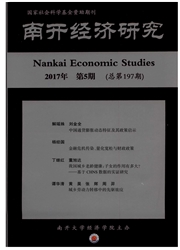

 中文摘要:
中文摘要:
考虑到金融市场收益率分布的厚尾性,在数值模拟的基础上,提出了一类新的波动率模型一条件自回归拟极差模型(QCARR)。QCARR和Chou(2005)所提出CARR模型,Engle(2002)所提出的ACD模型等具有类似的结构,可看作CARR在样本分位数下的推广。利用上证综指估计了两种特殊类型的QCARR模型(QCARR1,QCARR2),采用滚动样本预测的方法,比较了上述模型与经过常数调整的CARR(ACARR)以及GARCH的样本外预测能力。结果表明:(i)对模拟数据,在所考虑的估计方法中,第二类拟极差估计和调整极差估计最优。(ii)对上证综指收益率数据,无论是预测的误差分析还是回归分析,QCARR,在上述模型中都是最优的,对上述结论我们给出了相应的解释。
 英文摘要:
英文摘要:
Motivated by the heavy-tailed distribution of return in financial market, we proposed a dynamic volatility model based on numerical simulation: the Conditional Autoregressive Quasi-range Model (henceforth QCARR ).The evolution of QCARR is specified in a fashion similar to the CARR model of Chou ( 2005 ), ACDmodel of Engle (1998)and can be viewed as the generalization of CARR with sample quantiles.Two classes of QCARR (QCARR1, QCARR2 )are estimated using Shanghai Composite Index data.The out-of-sample forecast power of QCARR1, QCARR2 ACARR and GARCH using rolling sample also be investigated.The result shows that ( i ) for simulated data, R2 and adjusted-range provide sharper estimates of diffusion parameter. (ii) for return data of Shanghai Composite Index, QCARR2 provides the best estimates of volatility among ACARR, QCARR1, QCARR2 and GARCH. Some possible explanations are given in the last section.
 同期刊论文项目
同期刊论文项目
 同项目期刊论文
同项目期刊论文
 Method for uncertain multi-attribute decision-making with preference information in the form of inte
Method for uncertain multi-attribute decision-making with preference information in the form of inte Three symmetric solutions for a class of elliptic equations involving the p-Laplacian with discontin
Three symmetric solutions for a class of elliptic equations involving the p-Laplacian with discontin 期刊信息
期刊信息
